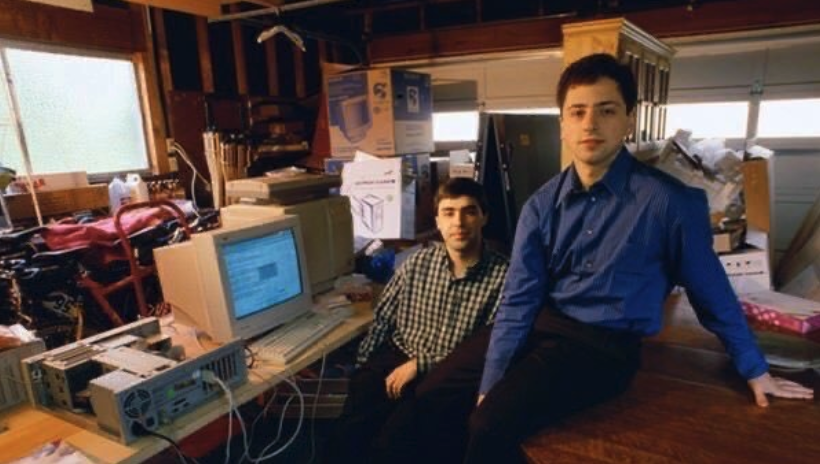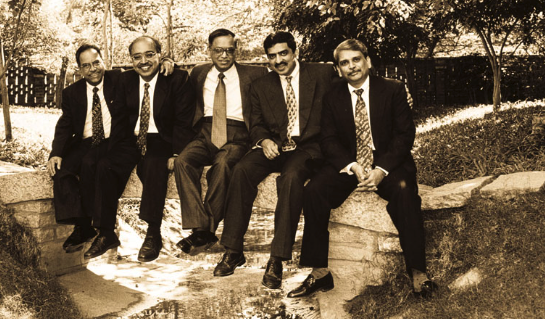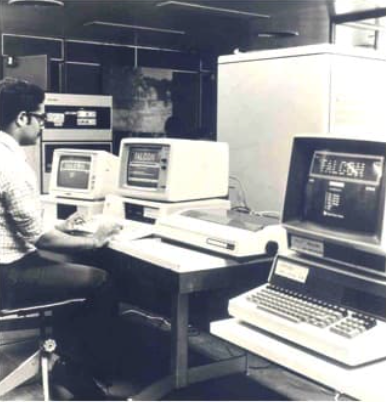garages
There can be hardly anything special about a garage. But when it comes to histories of tech behemoths that are now so deeply involved with our lives, we are surpised to learn that so many of them got their start in garages.
This history and popular culture surrounding technology companies and their origin stories played an important role in shaping my decision of pursuing this side project — after all, the idea of its formation, with Karthik being my co-conspirator, had its origin in my garage in California, my home for over a decade.
I have often wondered why so many large Technology companies were born in garages? There are perhaps no answers because humble beginnings are the norm for most companies. And when companies experience monumental success as some of the companies I discuss here have had, their origin stories become all the more alluring and interesting.
Standing in front of Googleplex, the corporate headquarters of Google in Mountain View, California that has a space of 2 million square feet, for anyone including myself, it would be difficult to believe that the spellbinding journey actually started from a garage.
On their mission to organise the world’s information and make it universally accessible and useful, two Ph.D. students at Stanford University, Larry Page and Sergey Brin rented a garage in Menlo Park, California from Susan Wojcicki for $1700 a month to start an internet company in September 1998. Unsure about what these two computer scientists are going to do, Wojcicki thought it wise to take a security deposit.
While the ensuing history of Google is widely known and discussed, with Wojcicki joining the company as its first marketing manager in 1999 and later becoming the YouTube CEO, it’s noteworthy that the founders of the company that changed the internet forever, have never forgotten their roots.
In an interview, Page and Brin recount:
Clunky desktop computers, a ping pong table and bright blue carpet set the scene for those early days and late nights.
Also, in 2006 in a telling remembrance, Google purchased the garage, and later in 2018, to celebrate its 20th anniversary, it recreated the Menlo Park, California garage for allowing a virtual tour of Google’s earliest office in new street-view 360-degree images from Google Maps.
While Google has now become ubiquitous, with its products and services used by billions — a rise that continues to astonish all of us to this day. But, to me, it is the garage episode that continues to remain an enigma.

Although there are differences of opinion regarding the popular belief that the first Macs were designed and built in the Los Altos house garage of Steve Jobs, the co-founder of Apple, there’s no denying the fact that it’s in this very place where Jobs along with Steve Wozniak exchanged their first ideas.
These ideas eventually took shape and Apple established itself as the pioneer of personal computers.

Another big name in the world of technologies, software, solutions, and services, Hewlett-Packard also has a remarkable presence of a garage in its storied history.
More than 8 decades ago, in 1939, it was in this 12x18-foot room at 367 Addison Avenue, Palo Alto, California near Stanford University that college friends Bill Hewlett and Dave Packard started pursuing their dream of forming a company.
While the duo will be remembered as the pioneers of the electronics revolution, this tiny garage served as their research lab, development workshop, and manufacturing facility for early products, including the Model 200A audio oscillator which they sold to Disney for the film Fantasia.
In 1989, through a formal dedication ceremony attended by both Bill and Dave, California named the garage The birthplace of Silicon Valley and made it a California Historical Landmark. Saluting their roots, HP acquired the property in 2000 and transformed it into a heritage project in 2005, restoring the garage, the shed, and the house to conditions exactly as they were in 1939.
In 2007, the property was incorporated into the National Register of Historic Places.

Often referred to as one of the most influential economic and cultural forces of the world and one of the most valuable brands, the trillion-dollar e-commerce conglomerate Amazon also had a very humble beginning. Its founder Jeff Bezos launched Amazon as an online bookstore in 1994 from the garage of his three-bedroom rented house in the suburb of Bellevue, Washington.
According to The Wall Street Journal, Bezos chose it in part because it had one crucial requirement — a garage, so that he could boast of having a garage start-up like Silicon Valley legends from Hewlett-Packard on. This should be enough to underscore how much value and sentiment the Amazon founder attaches to his roots.

Success stories from humble beginnings scripted in India invariably takes us to the story of Infosys.

On a January morning in 1981 N. R. Narayana Murthy and his six software engineer friends Nandan Nilekani, N. S. Raghavan, S. Gopalakrishnan, S. D. Shibulal, K. Dinesh, and Ashok Arora started the onward march to build one of the most inspiring companies that India has ever seen. A company that defined a generation of professionals and changed the landscape of India's IT sector.
The names of N. R. Narayan Murthy and Nanda Nilekani are taken with the kind of reverence one utters the names of their guru or family deity. These individuals are luminaries in technology unlike the world has ever seen. Deeply steeped in strong cultural and family values, Murthy and Nilekani have scripted one success story after another. But the beginnings were far from ideal.
When Infosys got its start, they had no capital at all. This should have been enough for any aspiring entrepreneur to get dispirited and quit. Especially given the economic conditions in India and the state of our laws for technology imports.
Thankfully, Sudha Murthy handed over her painstakingly accumulated savings of Rs 10,000 ($250 then) to her husband, N. R. Narayana Murthy on an unassuming April day, and finally on July 7, 1981, Infosys was founded. Since there was no question of renting an office, it was in the Murthys’ house in Pune near Deccan Gymkhana, the headquarters was registered.
The journey was arduous. The quantum of deterrents Murthy and his colleagues had to encounter will be unthinkable for any American counterpart. In a conversation with Karan Thapar, Murthy recalled the days of unending struggle:
I took a tenth of the salary that I used to get in my previous job, though I made sure that my other colleagues got 20 per cent more. We had to travel by train from Pune to Delhi or Bengaluru to Delhi, and we had to stay in seedy hotels.
When asked about the experience in dealing with the government, the Infosys co-founder replied:
It was a real nightmare…you had to travel to Delhi about 50 times before you got a license to import a computer.
The list would be long to accommodate in a single chapter. Sad but true, it was the milieu then, typical of India’s pre-liberalization days.
Thus, despite the glitter that now emanates from the Infosys of today – NYSE listing, US$ 17.53 billion (LTM FY23 revenues) company with a market capitalization of approximately US$ 71.41 billion, and more than 345k employees worldwide, the history of its humble beginning and the feat of surmounting all impediments are genuinely inspiring.

If the Infosys success story mirrors the indomitable entrepreneurship spirit of the Indian middle-class that often gets unrecognized, the rise of TCS will stand out as one of the finest instances of smart corporate management India has ever seen.
Founded originally as Tata Computer Systems in 1968 by a division of Tata Sons Limited, Tata Consultancy Services is now a multinational information technology (IT) services and consulting giant, and ranks as one of the world’s most valuable IT service brands with a global staff strength of more than 6,00,000.
The continuing onward march of TCS that has seen several prudent acquisitions, alliances & partnerships, expansion, and diversification, investments in new-age technology research & development, start-up investments, etc. over the decades has undoubtedly set new benchmarks for the corporate world to emulate.

Origin stories are only interesting when the hero of the story finally wins the battles and emerges victorious. As technology professionals, we like to romanticisze humdrum corporate lifecycles. We are drawn to these stories because they hold out a promise to us.
A promise to deliver you to a transformed life if you follow through and build something that people want. A promise that does not require you to be born into privelege or wealth or connections. To build on merit that you can acquire. To build for a future that you have envisioned.
The origin stories of companies I've discussed here are just a handful. Many more stories have been told about individuals with grit and determination that stayed the course of their dreams and eventually changed the world.
In my own way I have constantly tried to live and relive the experience of being part of the "early" days of companies. There is something about the times when things are just in the beginning stages. When the uninspiring spectre of "process" has not appeared. When people sit around building stuff without quarterly plans and yearly goals.
In some ways this has expressed itself in career wanderlust where I have flitted from one role to another in search of that "beginning" environment. And my side-projects, many and unfished as they have been give me that quick fix of starting something from scratch. I will not pontificate on the good or bad of it, but I do agree that a career is to be treated like a person. A person that one lives with and grows with.
Being promiscuous with your career is perhaps as unexamined a way to deal with it as being dogmatic about it.
The balance is somewhere in the middle. And while I've searched for a recipe to script a perfect career, I am grateful that the technology industry, my seniors and colleagues ever since I started working have by and large created the most fulfilling environment I could have ever asked for.
I have had the privelege of working with managers and leaders who really took an interest in me and gave me the breaks that shaped my career.
I will forever be grateful to them.
And this privelge continues to favor me to this day as I continue to work with great colleagues and leaders of the industry.
True dreamers and doers.